What does the latest NLRS saleyard survey reveal?
Key points
- Cattle transactions rose to 4.84 million head, up from 4.18 million in FY2023–24.
- Sheep transactions increased to 16.39 million head, up from 14.09 million in FY2023–24.
The National Livestock Reporting Service (NLRS) annual saleyard survey results are in for FY2024–25. The survey identifies the number of cattle and sheep consigned to Australian saleyards across all states (except NT) over the financial year.
Saleyard transaction trends tracking informs investment, strategic direction of and into saleyards and highlights the social, economic and cultural value saleyards provide to rural and regional communities.
This year’s saleyard survey captured data from 73 cattle and 35 sheep saleyard facilities. A significant increase was noted across the majority of states for both cattle and sheep transactions.
State-by-state breakdown
NSW cattle throughput increased 22% year-on-year (YoY). Dubbo Regional Livestock Market and Southern Regional Livestock Exchange (Moss Vale) notably increased 32% and 35% respectively.
Sheep transactions in NSW rose 13% to approximately 9.2 million head. Central West Livestock Exchange (Forbes) recorded a 33.5% rise in sheep transactions.
Queensland cattle transactions rose 21% to 1,358,855 million. With Roma, Dalby and Charters Towers among the top performing saleyards.
Victorian cattle throughput lifted 21% to 1,164,296 million head. Leongatha saleyards posted a strong result up 71% YoY, however, stock destined for Pakenham saleyards, which closed, ended up at Leongatha. A 32 % lift at the Western Victoria Livestock Exchange (Mortlake) was partially attributed to the closure of Camperdown saleyards.
Sheep supply at Victorian saleyards lifted 8% to just over 4.8 million head.
SA cattle throughput increased 12% YoY, while sheep supply dipped 1%.
WA posted the largest percentage increase in sheep transactions at 60.2%, driven by activity at Katanning and Muchea. Cattle transactions increased 17%.
Tasmania experienced a 23.1% rise in sheep transactions, while cattle numbers dipped slightly by 5.2%.
The full survey results, including detailed breakdowns by state and saleyard, are available at NLRS Saleyard Survey.
Information is correct at time of publishing.
Attribute content to: Stephanie Pitt, NLRS Operations Manager



